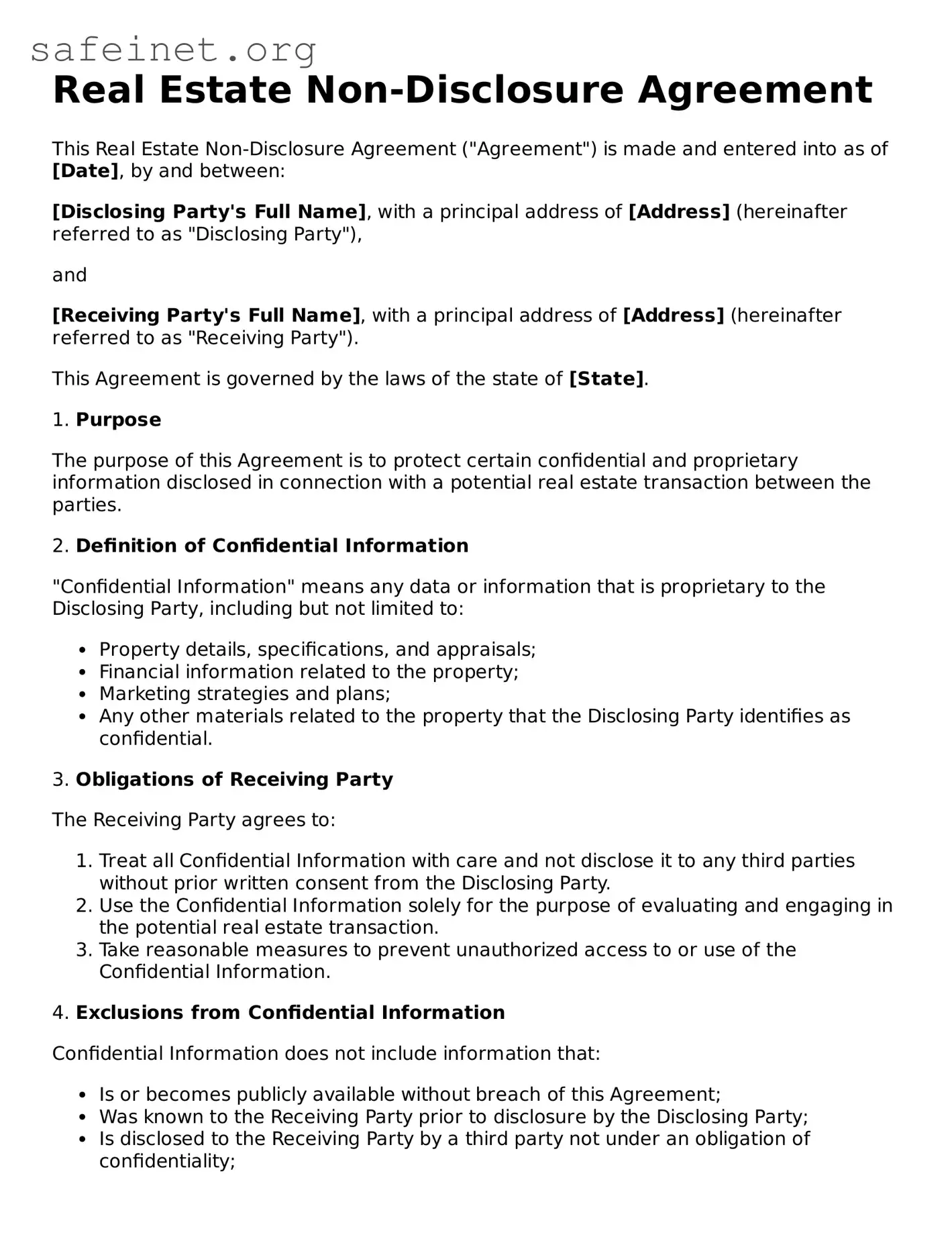Real Estate Non-Disclosure Agreement
This Real Estate Non-Disclosure Agreement ("Agreement") is made and entered into as of [Date], by and between:
[Disclosing Party's Full Name], with a principal address of [Address] (hereinafter referred to as "Disclosing Party"),
and
[Receiving Party's Full Name], with a principal address of [Address] (hereinafter referred to as "Receiving Party").
This Agreement is governed by the laws of the state of [State].
1. Purpose
The purpose of this Agreement is to protect certain confidential and proprietary information disclosed in connection with a potential real estate transaction between the parties.
2. Definition of Confidential Information
"Confidential Information" means any data or information that is proprietary to the Disclosing Party, including but not limited to:
- Property details, specifications, and appraisals;
- Financial information related to the property;
- Marketing strategies and plans;
- Any other materials related to the property that the Disclosing Party identifies as confidential.
3. Obligations of Receiving Party
The Receiving Party agrees to:
- Treat all Confidential Information with care and not disclose it to any third parties without prior written consent from the Disclosing Party.
- Use the Confidential Information solely for the purpose of evaluating and engaging in the potential real estate transaction.
- Take reasonable measures to prevent unauthorized access to or use of the Confidential Information.
4. Exclusions from Confidential Information
Confidential Information does not include information that:
- Is or becomes publicly available without breach of this Agreement;
- Was known to the Receiving Party prior to disclosure by the Disclosing Party;
- Is disclosed to the Receiving Party by a third party not under an obligation of confidentiality;
- Is independently developed by the Receiving Party without the use of or reference to the Disclosing Party's Confidential Information.
5. Term
This Agreement shall remain in effect for a period of [Duration, e.g., two years] from the date of disclosure of Confidential Information.
6. Return of Materials
Upon request by the Disclosing Party, the Receiving Party shall return or destroy all materials containing Confidential Information.
7. Governing Law
This Agreement shall be governed by the laws of the state of [State].
IN WITNESS WHEREOF, the parties have executed this Real Estate Non-Disclosure Agreement as of the date first above written.
______________________________
Disclosing Party's Signature
Date: ________________________
______________________________
Receiving Party's Signature
Date: ________________________
